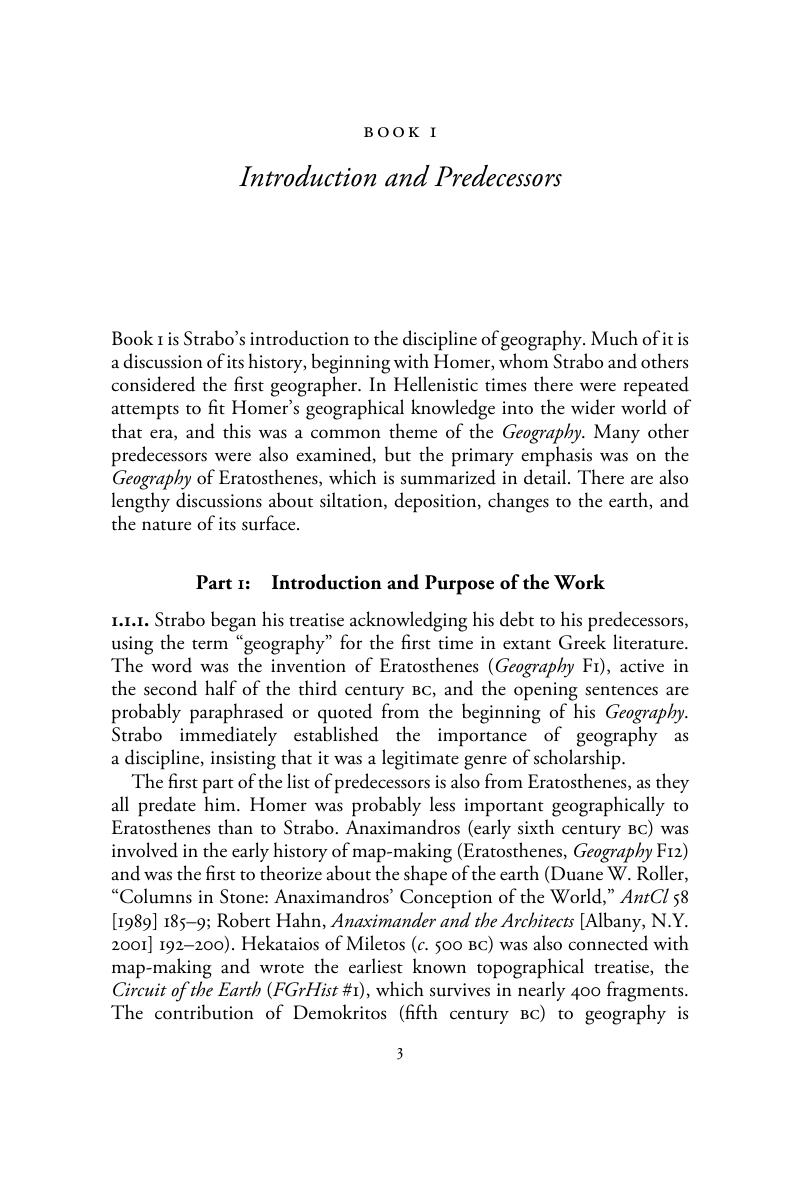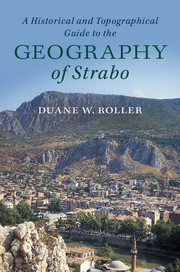Book contents
- A Historical and Topographical Guide to the Geography of Strabo
- A Historical and Topographical Guide to the Geography of Strabo
- Copyright page
- Contents
- Maps
- Preface
- Abbreviations
- Additional material
- The Guide to the Geography
- Book 1 Introduction and Predecessors
- Book 2 Further Discussion of Predecessors
- Book 3 Iberia
- Book 4 Transalpine Keltike
- Book 5 Northern and Central Italia
- Book 6 Southern Italia and Sikelia
- Book 7 Northern and Eastern Europe
- Book 8 The Peloponnesos
- Book 9 East Central Hellas
- Book 10 West Central Hellas and the Hellenic Islands
- Book 11 The Northeastern Part of the Inhabited World
- Book 12 Central and Northern Anatolia
- Book 13 Northwestern and West Central Anatolia
- Book 14 Southern Anatolia and Cyprus
- Book 15 Indike and the Persian Plateau
- Book 16 Assyria, Syria, Phoenicia, and Arabia
- Book 17 Egypt, Libya, and Conclusion
- Bibliography
- Index of Passages Cited
- General Index
Book 1 - Introduction and Predecessors
from The Guide to the Geography
Published online by Cambridge University Press: 08 February 2018
- A Historical and Topographical Guide to the Geography of Strabo
- A Historical and Topographical Guide to the Geography of Strabo
- Copyright page
- Contents
- Maps
- Preface
- Abbreviations
- Additional material
- The Guide to the Geography
- Book 1 Introduction and Predecessors
- Book 2 Further Discussion of Predecessors
- Book 3 Iberia
- Book 4 Transalpine Keltike
- Book 5 Northern and Central Italia
- Book 6 Southern Italia and Sikelia
- Book 7 Northern and Eastern Europe
- Book 8 The Peloponnesos
- Book 9 East Central Hellas
- Book 10 West Central Hellas and the Hellenic Islands
- Book 11 The Northeastern Part of the Inhabited World
- Book 12 Central and Northern Anatolia
- Book 13 Northwestern and West Central Anatolia
- Book 14 Southern Anatolia and Cyprus
- Book 15 Indike and the Persian Plateau
- Book 16 Assyria, Syria, Phoenicia, and Arabia
- Book 17 Egypt, Libya, and Conclusion
- Bibliography
- Index of Passages Cited
- General Index
Summary

- Type
- Chapter
- Information
- Publisher: Cambridge University PressPrint publication year: 2018



